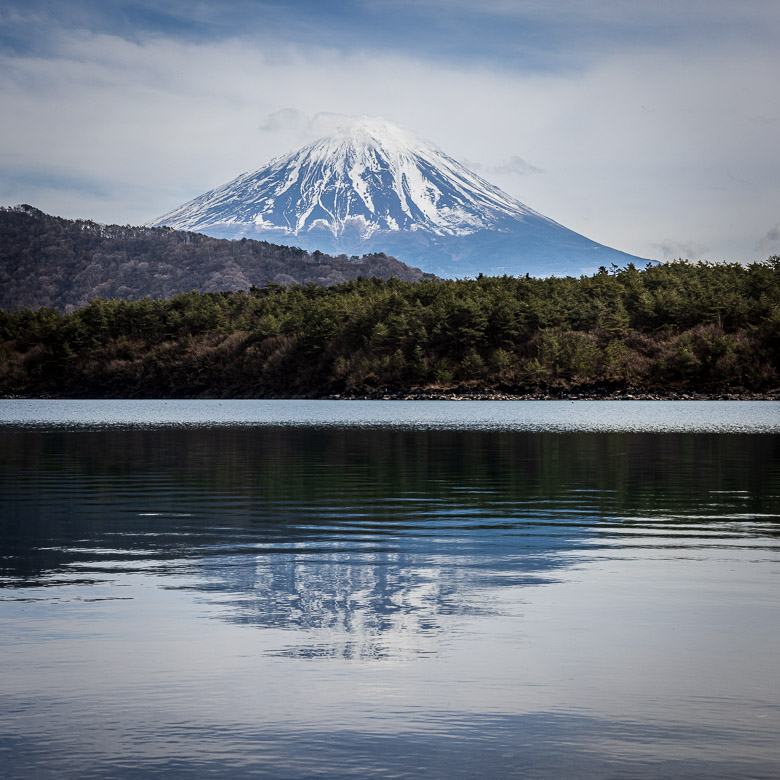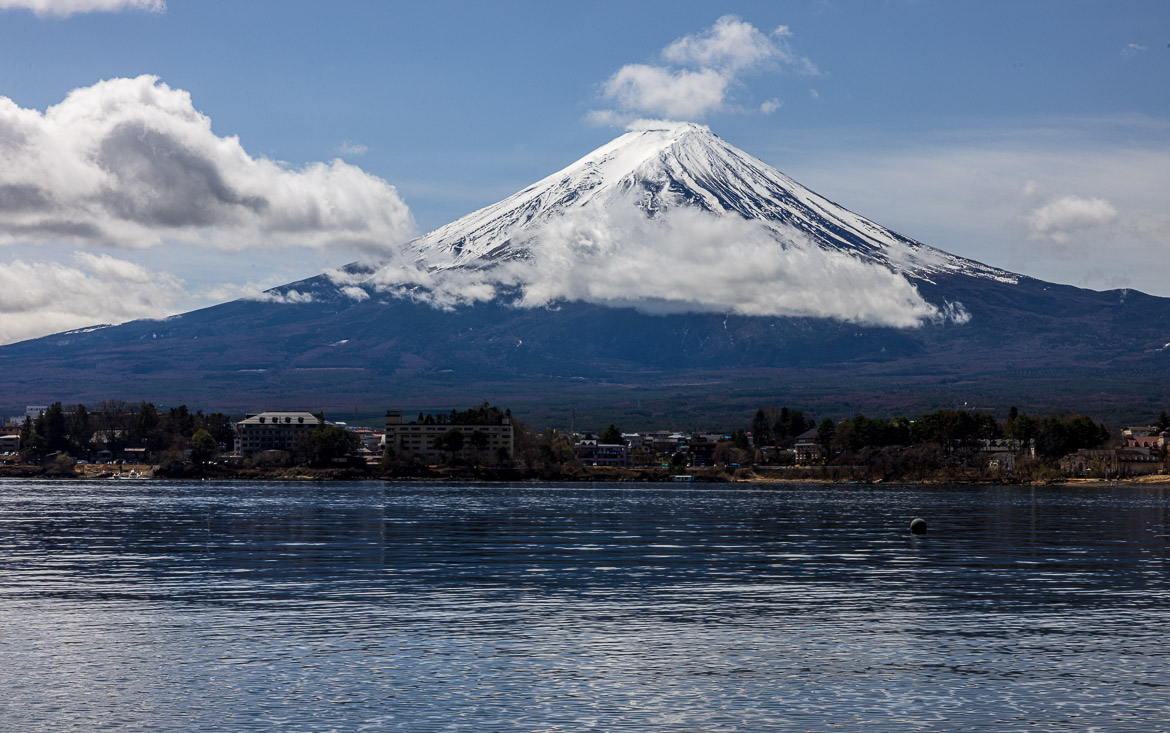
The second day the yellow haze caused by sand blowing over from China had cleared due to an overnight rainstorm. But in the morning, the volcano was instead covered in clouds that cleared as the day went on. So Jennifer and I spent a couple of hours waiting and were rewarded by the mountain appearing very clear.
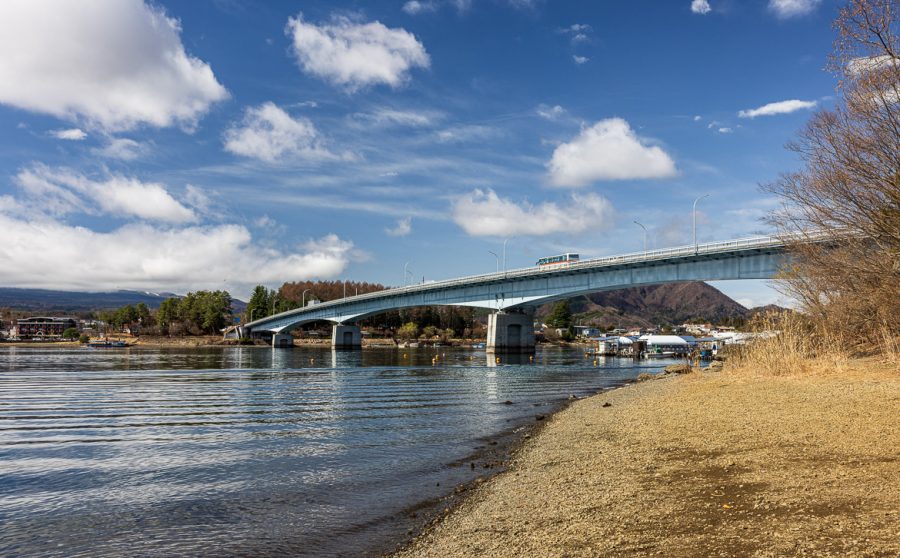
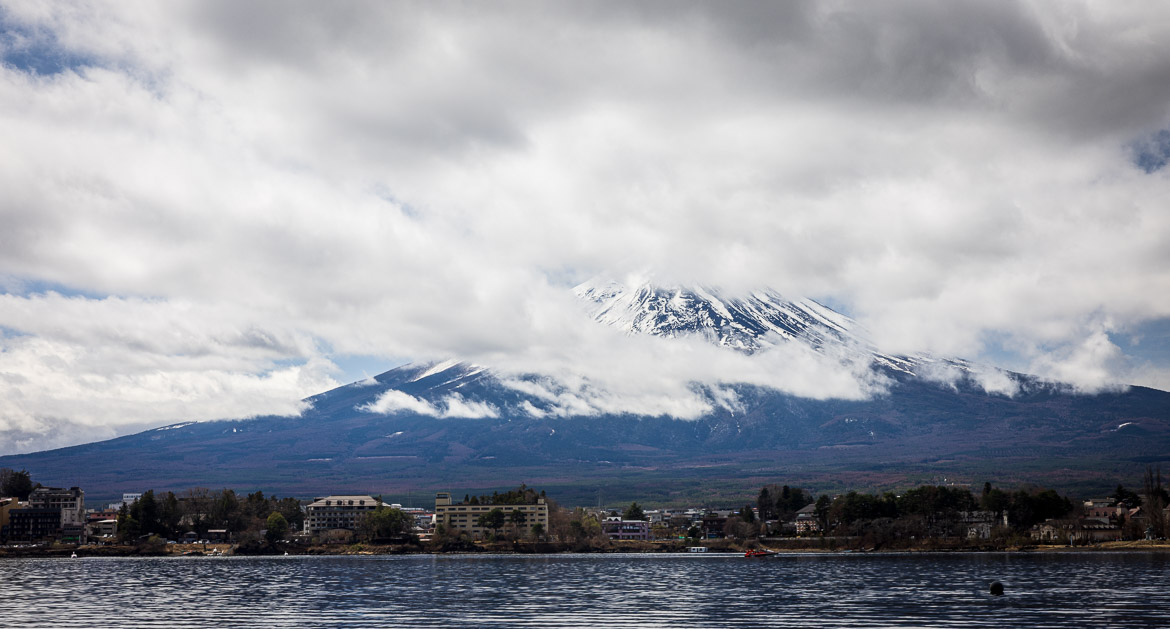
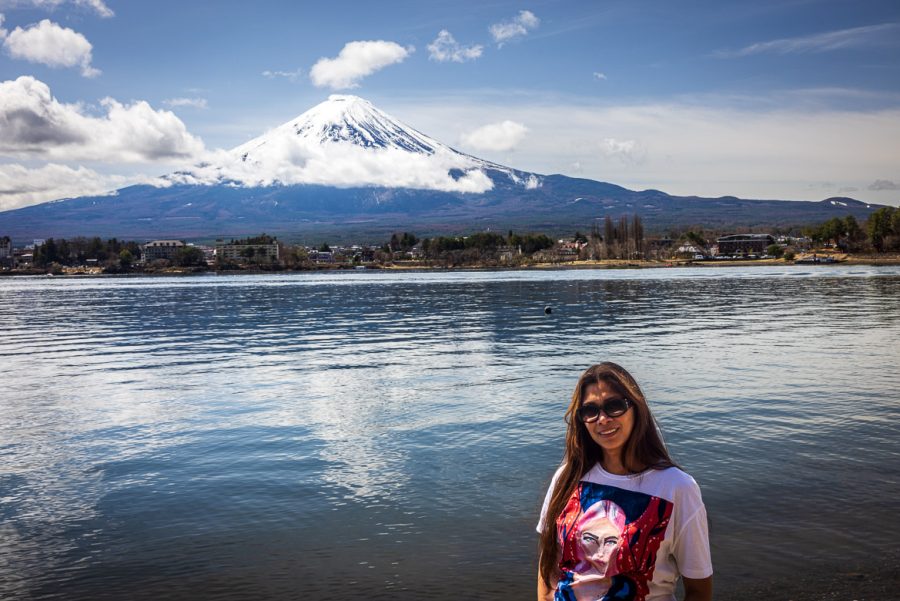
We drove up to Koyodai Observatory to get a view of Mount Fuji from another angle and altitude. We are about 1,200 metres above see level, but Mount Fuji rises nearly 3,800 metres, so it was still towering above us.
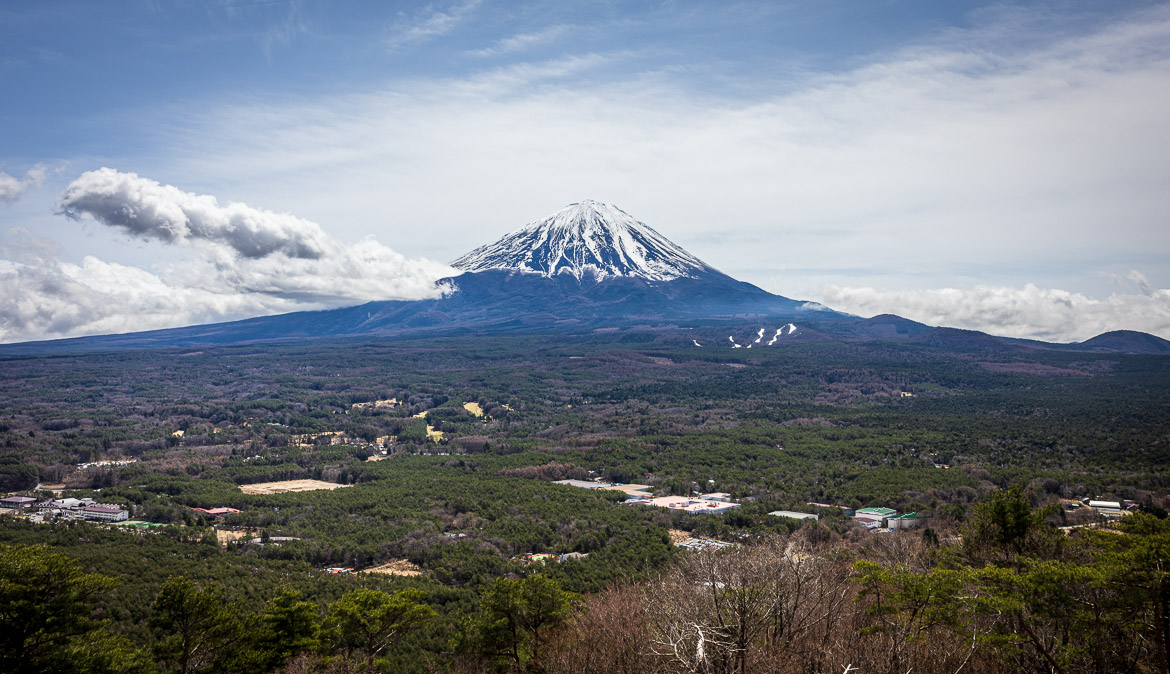
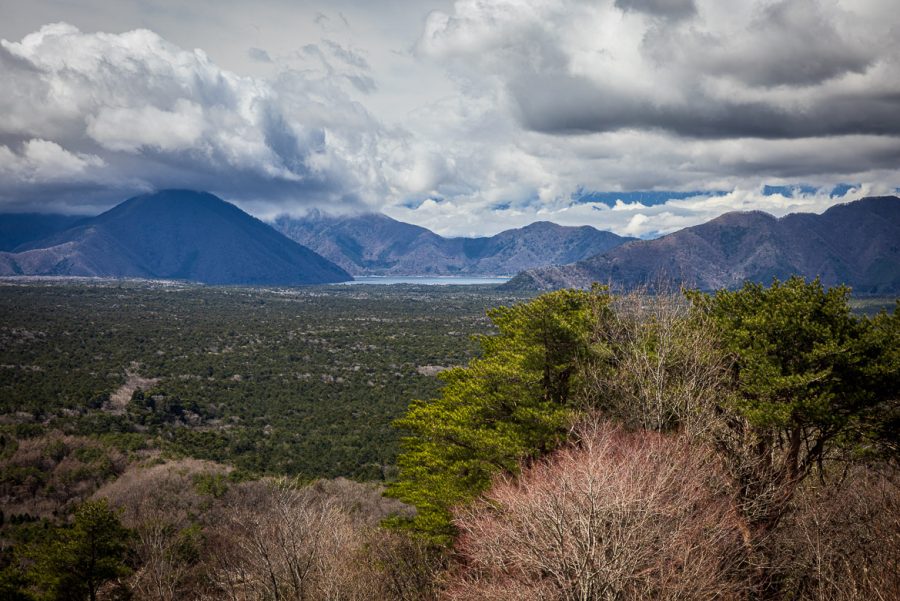
All around the volcano the ground is covered by volcanic lava. At certain places the layer of soil above the lave is limited and the roots have to grow really horizontally. The trees are small and the roots, trying to grab around the lava blocks, creat fascinating forms. We visited the Dragon Cave, one such place, which had got religious significance in Japanese culture, but I was more interested in the nature’s beauty.
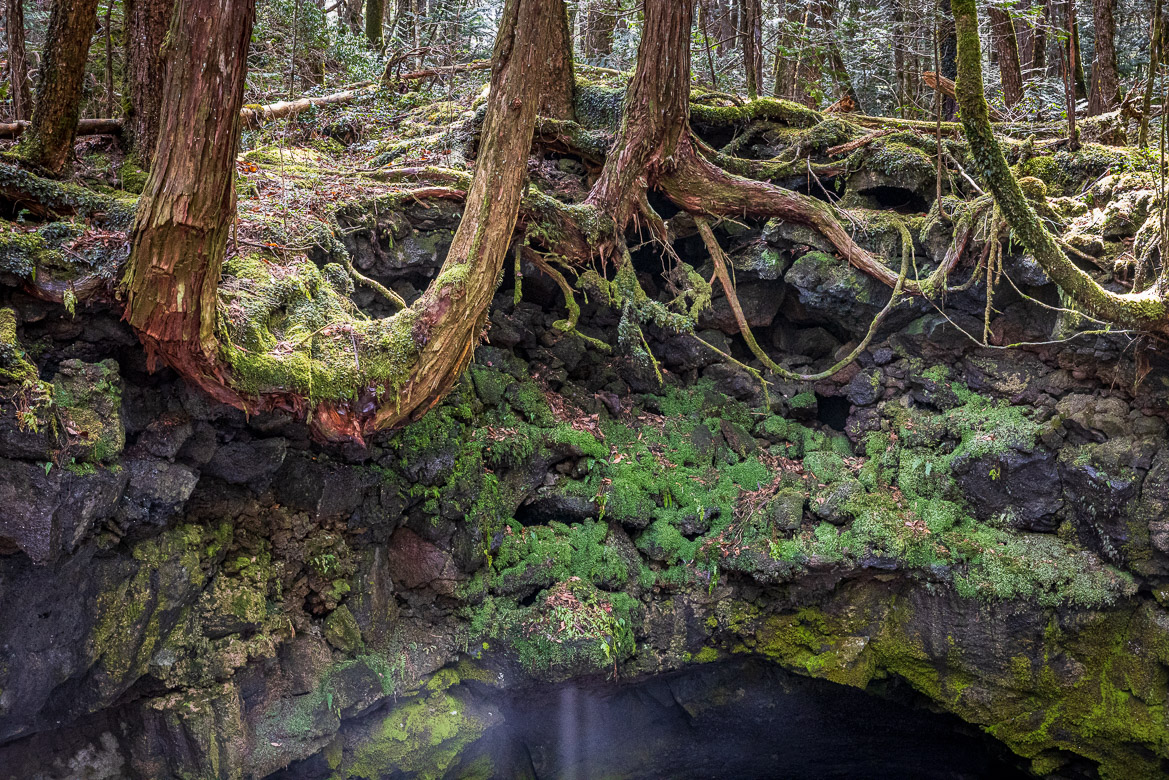
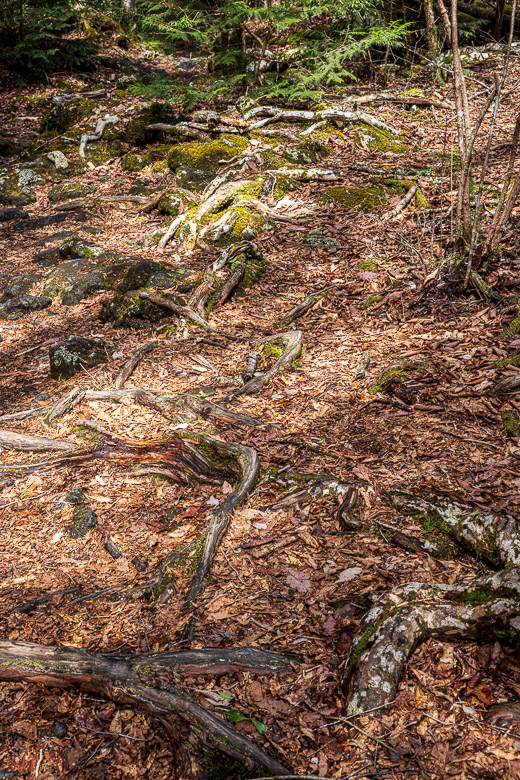
On the other side of Lake Saiko we visited Saiko Iyashi-no-Sato Nemba, a traditional village that now was a museum. Lovely old houses with thatched roofs and one of the houses also harboured a nice little restaurant that provided our lunch.
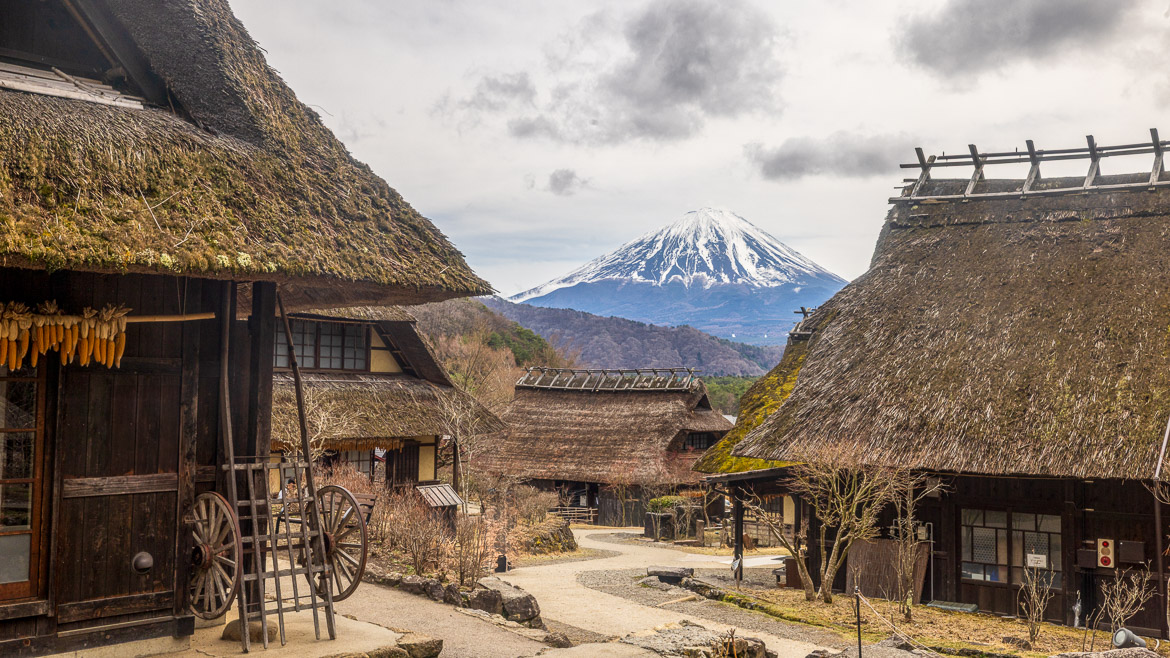
When we passed Lake Saiko the last time the wind had calmed down and we were able to see some limited reflections of the Goddess, Mount Fuji, before returning back.
